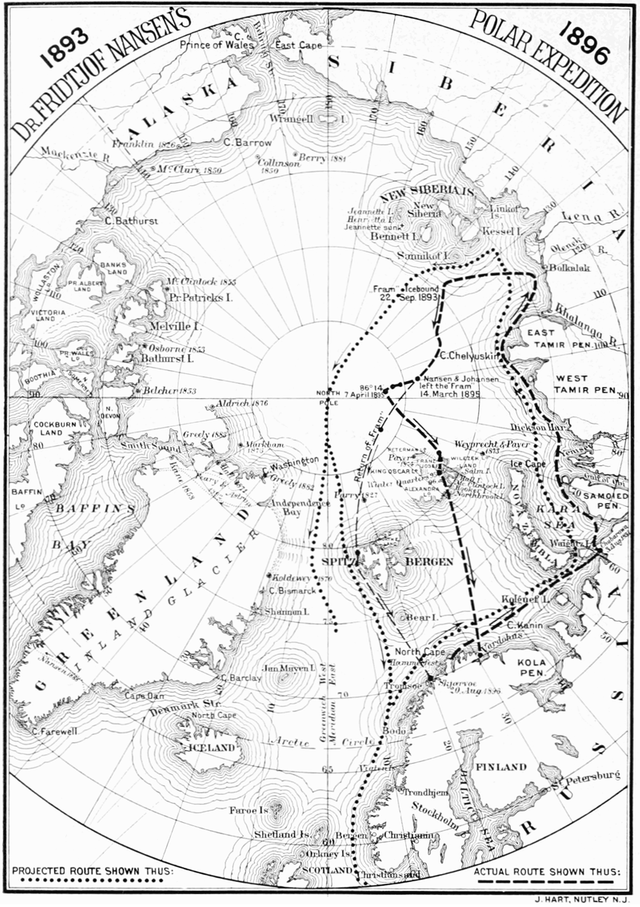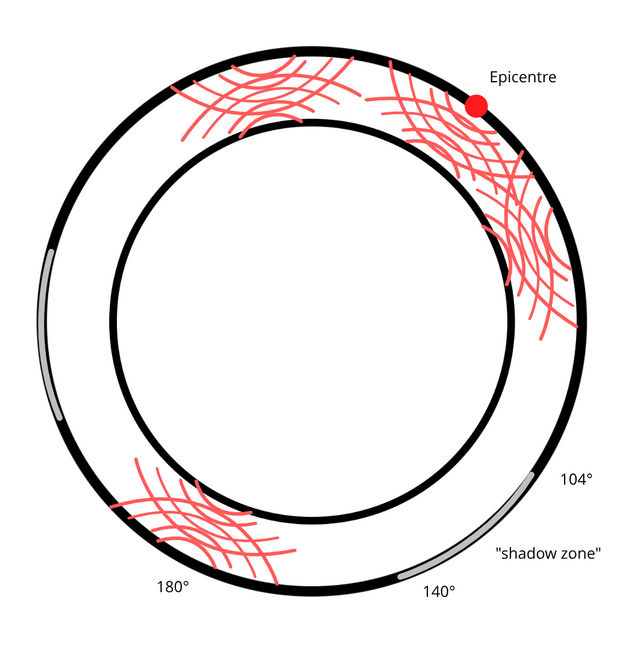On the hypothesis of polar holes, misrepresentations from William Reed
Based on the theory of radial expansion, expansion tectonics, it seems very likely that the Earth is hollow. Seismic data also corroborates that. That does not necessarily mean that there are "polar holes". It is common for false ideas to hitchhike on true ideas, so I will analyse some content here that is misrepresenting arctic explorers (polar holes could still be true, but these particular sources are apparently not. )
Why I consider the "polar holes" idea is because I believe in the theory of radial expansion, based on that it seems likely that the Earth is hollow, seismology seems to fit with that. Those are very simple reasons. Then, there is the reason that I know first hand witnesses of flying saucers, and that is a complex problem that has gone unanswered for many generations now, so if I can completely rule out the "Flying Saucers From The Earth's Interior" theory, I can understand better what the remaining possibilities are (also if I happen to prove it no need for other explanations..)
Misrepresentations from William Reed
This quote is from Greely exploring a fiord on Ellesmere Island, see page 265 of Three Years Of Arctic Service Vol I,
"The deep interest with which we had hitherto pursued our journey was now greatly intensified. The eye of civilized man had never seen, or his feet trodden, the ground over which we were traveling. A strong, earnest desire to press forward at our best speed seized us all. As we neared each projecting spur of the lands ahead, our eagerness to see what was beyond became so intense at times as to be painful. Each point we reached brought a new landscape in sight, and always in advance was a point which cut off a portion of the horizon and caused a certain disappointment. "
It is being misrepresented by William Reed as Greely nearing the polar hole, and later referenced by Raymond W Bernard
"If Greely and his companions were entering into the interior of the earth, they would certainly find that the earth has a greater curve near the poles than at any other place; and as they passed over and around the farthest point north, each projection reached would be followed by another which always seemed to take in part of the horizon. This is just what happened. "
Another quote that is misrepresented by William Reed is Nansen on page 355 of Farthest North, Vol II,
"This island we came to seemed to me to be one of the most lovely spots on the face of the earth. A beautiful flat beach, an old strand-line with shells strewn about, a narrow belt of clear water along the shore, where snails and sea-urchins (Echinus) were visible at the bottom and amphipoda were swimming about. In the cliffs overhead were hundreds of screaming little auks, and beside us the snow-buntings fluttered from stone to stone with their cheerful twitter. Suddenly the sun burst forth through the light fleecy clouds, and the day seemed to be all sunshine. Here were life and bare land; we were no longer on the eternal drift-ice! At the bottom of the sea just beyond the beach I could see whole forests of seaweed (Laminaria and Fucus). Under the cliffs here and there were drifts of beautiful rose-colored snow. "
That is Nansen heading south and arriving to Franz Joseph Land, not heading north and coming across unexpected land with life and so on.

William Reed comments on it that
"When one takes into account Nansen's description of this island, and connects that with the fact that no one has been able to reach the pole, notwithstanding that the travelers keep going where it is warmer, where there is more life, less ice, and but little snow, yet they make no progress that leads them to the much-sought goal, this is one of the strongest arguments that there is no such place. The farther the explorers pass into the interior of the earth, the warmer it will be found; and when they succeed in passing the belt of country that has so much fog, snow, and clouds, and drift-ice coming up from the interior, they will find plain sailing and comfortable weather, but they will never reach the pole. "
Good science vs shit science
The model I developed for explaining propagation of seismic waves, inspired by a video that showed waves propagating by reverberation, fits perfectly with the data of "shadow zones", since waves from all directions converge at 180° and then reverberate outwards 40° in all directions (and before that loose energy, leading to seismic readings barely detectable beyond 104° and up to 140°. ) I think it is pretty good. In the "hollow Earth" space, people usually reference a Jan Lamprecht who has developed a model for seismology on hollow planets, but his model is still based on refraction like the solid-Earth model, it is biased to the idea he tries to compete with, a priori prejudice from the meme that he tries to falsify.


On the hypothesis of polar holes
Are there polar holes? Our civilization has more or less been investigating UFOs since 1947, I know first hand witnesses, and high profile people like Edgar Mitchell from Apollo 14 has testified that Roswell was a flying saucer, so has the son of a Jesse Marcel who was at the crash site (and who according to his son later contributed to the "weather ballon" psyop and posed with fake photographs), and to me the existence of flying saucers is empirically proven.
"The fact that the government, at this point, I know we've been investigating since 1947, has not come up with an answer, to me indicates that there’s something seriously wrong. "
-Lt. Col. Charles Brown, Sirius Disclosure
That does not necessarily mean they come from "inner Earth".
The time line with the USA invading Antarctica in 1946, and the Roswell crash, plus flying saucers being actively investigated since, does fit pretty well.
